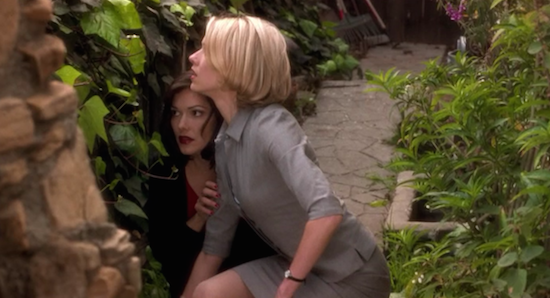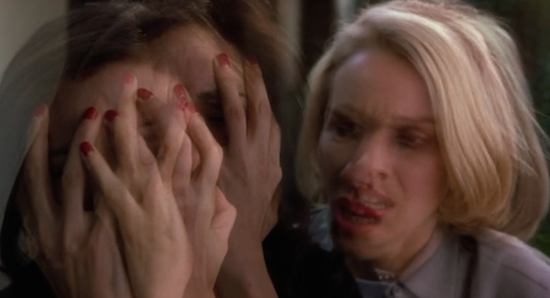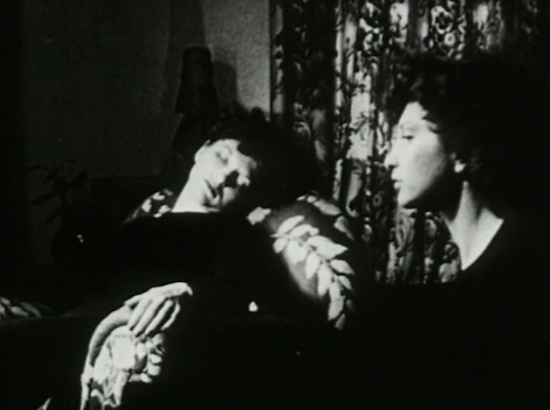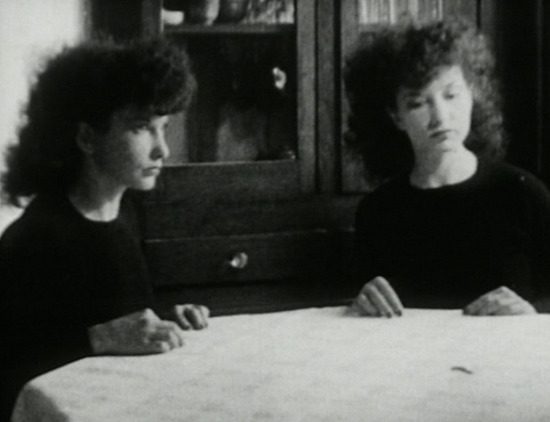Our Research Notes series invites authors to describe their research for a recent book, with “research” defined as broadly as they like. This week, Nicholas Rombes writes about The Absolution of Roberto Acestes Laing from Two Dollar Radio.
+
 In one of the most dangerous, “Lynchian” moments in David Lynch’s Mulholland Drive, Betty (Naomi Watts) and Rita (Laura Harring) sneak around a lushly planted and green and flowering and maze-like apartment complex looking for Diane Selwyn (who is probably Betty herself). It’s like a fevered re-imagining of something from Nancy Drew as the two female sleuths make their way to Diane’s apartment — which turns out not to be her apartment, actually — not at night but in the beautiful California sun, which makes it all the more unsettling. What’s strange is the fact that, well, there really is nothing overtly strange or surreal or uncanny about the sequence and yet it manages to be all these things at once.
In one of the most dangerous, “Lynchian” moments in David Lynch’s Mulholland Drive, Betty (Naomi Watts) and Rita (Laura Harring) sneak around a lushly planted and green and flowering and maze-like apartment complex looking for Diane Selwyn (who is probably Betty herself). It’s like a fevered re-imagining of something from Nancy Drew as the two female sleuths make their way to Diane’s apartment — which turns out not to be her apartment, actually — not at night but in the beautiful California sun, which makes it all the more unsettling. What’s strange is the fact that, well, there really is nothing overtly strange or surreal or uncanny about the sequence and yet it manages to be all these things at once.

I probably watched that sequence — which lasts a little over seven minutes — a sickening number of times during the intense re-write stages of The Absolution of Roberto Acestes Laing. The shots alternate rhythmically between showing Betty and Rita as if we are going along with them, and depicting through first-person their points of view, as if the camera has become them. I don’t know what I was trying to figure out. On the surface it’s a pretty simple and direct sequence: Betty and Rita are searching for Diane, poking around her apartment complex. But then why is it so spellbinding?

That sequence — and others like them across a span of films that challenge the policed boundaries between the real and the wished-for real — would not exist were it not for Maya Deren’s remarkable 1943 short film Meshes of the Afternoon, where we find Deren tracking herself across a series of spatial and temporal landscapes. At one point she enters a house and finds herself asleep on a chair, perhaps dreaming the dream that is the film? Later, as she enters the house again — the film is a loop of repetition with difference — she encounters two versions of herself waiting at a table.

What both Mulholland Drive and Meshes of the Afternoon share is desire. A desire to explore the reality that lies beneath reality, sometimes just beneath, so that if we look quickly enough we can catch it in glimpses. The alien spaces in Mulholland Drive aren’t on another planet but in the everyday: behind a Winkie’s, in the open spaces of an apartment courtyard, in a parking lot in the sun. After Betty and Rita discover Diane’s (Betty’s) decaying, post-suicide body in the apartment, a double-exposed shot captures not just Betty’s multiple selves, but the abject fear that comes from knowing that the world of appearances is always on the verge of giving way to that other reality that lies beneath.

In The Absolution of Roberto Acestes Laing I tried to honor that porous border, experimenting with dissolves, cross fades and other techniques drawn from the movies I love. The book is about film obsession, but I also hope this obsession leaks through into its structure, mood, pacing. In a sense, the research for the book has been a life losing, and finding, myself in movies, of which Meshes and Mulholland Drive are two of the most potent.
And dangerous . . .
+++